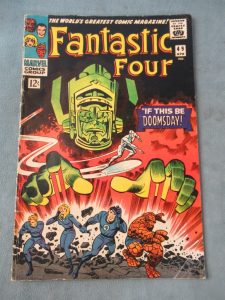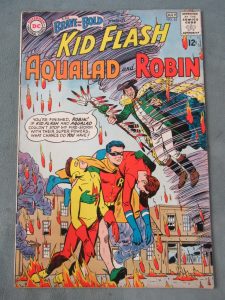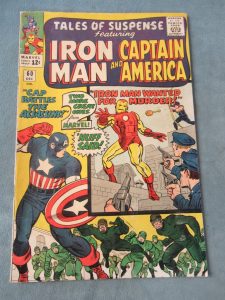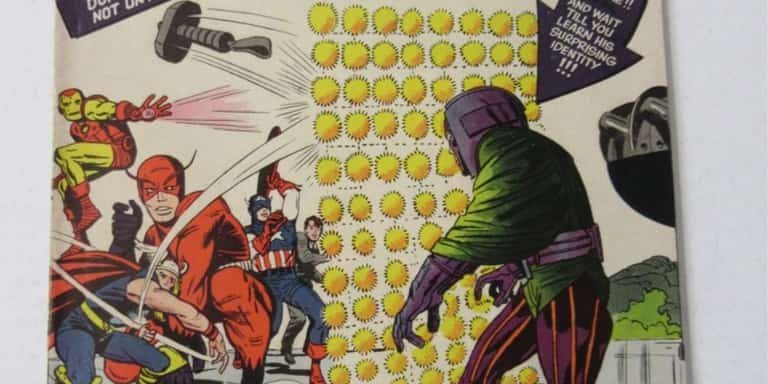Welcome back to Hammer Drops! Each week, Back to the Past shares its wealth of collectibles knowledge with you, the collectible-sales-do-it-yourselfer. This week, we’re continuing our series on defining our descriptive terms and defining the Silver Age of comics. We pick up where we left off last week, in the mid-1950s…

Detective Comics #359 (1966), 1st appearance of Barbara “Batgirl” Gordon. Sold for $2,500 at auction. Art by Infantino.
Barry Allen Ushers In A New Age
The newly minted Comics Code Authority effectively de-clawed the top selling comics of the early fifties. Crime stories now required a firm moral ending, traditional supernatural monsters like vampires and werewolves were now forbidden, and even bad grammar was heavily discouraged. The original 1954 rules were really ridiculously restrictive. The comic industry went into a minor slump as popular genres effectively vanished from newsstands. In 1956, DC Comics came up with an idea to turn things around: revive superheroes!
By 1956, the only superheroes still hanging in there on newsstands were Batman, Superman, and Wonder Woman. While characters like Green Arrow, Aquaman, and Martian Manhunter were actively being published, they hung on as back-up features in comics headlined by one of DC’s Trinity. That changed with Showcase #4. Writer Gardner Fox and artist Carmine Infantino took the name, basic origin, and power set of a Golden Age hero named The Flash and created a brand new character to fill the role. Thus was born Barry Allen, police scientist and red-suited crime-fighter! Boasting sleek, more realistic artwork heretofore uncommon in superhero features, DC’s new Flash quickly a proved a hit. This prompted a solo series and was quickly followed by new versions of Golden Age heroes like The Atom, Hawkman, and Green Lantern.
In 1960, The Brave and The Bold #28 pulled together heroes from across DC’s burgeoning superhero line to create The Justice League of America. The team quickly warranted a series of its own, and made superhero teams the hot new thing. And that laid the seeds of the next major revolution in comic writing.

Fantastic Four #49 (1966), 1st Appearance of Galactus. Sold at auction for $700.
Enter The Marvel Age of Comics
By 1960, Atlas Comics wasn’t doing so hot. It was publishing about sixteen titles, though only eight per month on a bimonthly schedule. The company’s editor-in-chief, the owner’s cousin, was also the writer on all of them – though his little brother helped out on a few. Their bread-and-butter was code compliant sci-fi/horror tales. While not as pointed as those published by EC Comics, they did allow for a certain richness in characterization lacking in the average superhero comic.Sci-fi and horror protagonists were allowed to be more flawed than the Man of Steel or the King of Atlantis, y’know?
So when the company’s owner requested launching a new title to compete with the Justice League, his overworked cousin hedged his bets. He opted to write the series in such a way that didn’t stand out too much from the company’s other titles. The heroes gained strange powers in a scientific accident, battled giant monsters and little green men, and they were flawed – they bickered, they were hotheaded, they felt sorry for themselves, they had all the human foibles that the Justice League didn’t. He teamed up with the company’s most famously prolific artist, a veritable human printer, on the series so that the production schedule on their few profitable offerings wouldn’t be messed up too much.

The Brave and the Bold #54 (1964), 1st appearance of the Teen Titans. Sold at auction for $375.
And that’s how writer/editor Stan Lee and artist Jack Kirby came to create the Fantastic Four. Iron Man, The Incredible Hulk, Thor, Ant-Man, Spider-Man, and many more would quickly follow.
Defining Traits of Silver Age Comic Books
One key defining trait of the Silver Age was the rise of the solo title. Falling page counts in the name of cost-savings had made true anthologies untenable. Gone were titles like All-American Comics or Marvel Mystery Comics, replaced by single-character titles like Green Lantern or The Amazing Spider-Man. Marvel Comics took this even further than DC, transitioning to long-form full-issue stories while the Distinguished Competition was still telling two shorts per issue.
Titles like The Brave & The Bold, Showcase, Marvel Super-Heroes, et al still persisted. However, instead of featuring multiple characters, they were “try-out books”. A new character would be introduced in their pages and, if the issue sold well, eventually they’d get their own series. The Teen Titans, Captain Marvel, and many others would win their own title in this way.
But the key change is the price! After more than a decade of working to keep the price at $0.10, the industry finally had to bow to rising costs and raise their prices. By 1962, $0.12 had become the standard across the board. From that point on, regular price increases would be come a regular fact of life in the industry, with prices creeping up to $0.20 by 1972.

Tales of Suspense #60 (1964), 2nd appearance of Hawkeye. Sold for $120 at auction.
Exceptions to Every Rule
Remember when we said anthologies fell out of favor? Well, that’s broadly true but there are some key caveats. Chief among them is that Marvel’s distributor for most of the 60s was DC’s parent company, which kept them locked into a limited number of titles published each month. In order to keep their still-profitable westerns and humor titles going during the superhero boom, heroes like Captain America and Iron Man or The Hulk and Ant-Man were required to share a single each each month while heroes like Spider-Man and the X-Men went straight to standalone series.
Another exception would be the cult favorite T.H.U.N.D.E.R. Agents from Tower Comics. It starred a group of linked heroes in solo features, four or five to an issue in all. Due to its increased size, it was $0.25 per issue – the price of an Annual or Giant-Size Special from DC or Marvel. It’s from 1965, but the unwary eye could mistake it as later or earlier based on its price and composition.
Factors like price, size, and content can help determine when a comic is from but nothing beats experience.Back to the Past has that experience, and we love to make it work for you! If you’ve got a comic collection you’re ready to bring to market, give us a call and we can help you figure out how best to handle it. And if you’re dead-set on going it alone, Hammer Drops will be sharing that experience with you every Wednesday.








